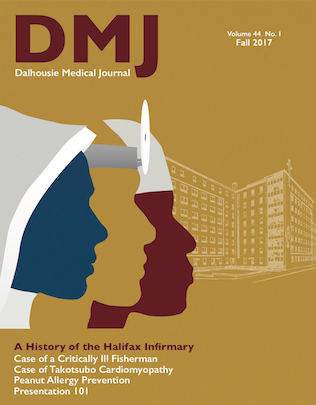Peanut allergy prevention: Current evidence and implications for clinical practice
DOI:
https://doi.org/10.15273/dmj.Vol44No1.7507Abstract
In the last decade there has been a major shift in clinical practice guidelines from the avoidance of allergenic foods for the purpose of preventing allergy development toward their early introduction before six months of age. The purpose of this article is to review current evidence for this change in recommendation and to evaluate its impli- cations for clinical practice. A literature review and analysis were conducted focusing on key clinical studies that influenced this change in practice over the past decade. The main findings supported the early introduction of peanut to the diet and highlighted two areas of uncertainty in the literature that have implications for adopting the new guidelines in clinical practice. First, current evidence lacks a clear definition of “high risk” for determining allergic predisposition in infants; and second, defining the ideal timing, amount, and frequency with which peanut and peanut containing foods are introduced into a child‘s diet is not yet established in the literature. The principal conclusion underscored the importance of early and continual exposure to peanut regardless of risk of atopy.
Downloads
Published
How to Cite
Issue
Section
License
Authors who publish with this journal agree to the following terms:
- Authors retain copyright and grant the journal right of first publication with the work simultaneously licensed under a Creative Commons Attribution License that allows others to share the work with an acknowledgement of the work's authorship and initial publication in this journal.
- Authors are able to enter into separate, additional contractual arrangements for the non-exclusive distribution of the journal's published version of the work (e.g., post it to an institutional repository or publish it in a book), with an acknowledgement of its initial publication in this journal.
- Authors are permitted and encouraged to post their work online (e.g., in institutional repositories or on their website) prior to and during the submission process, as it can lead to productive exchanges, as well as earlier and greater citation of published work (See The Effect of Open Access).


